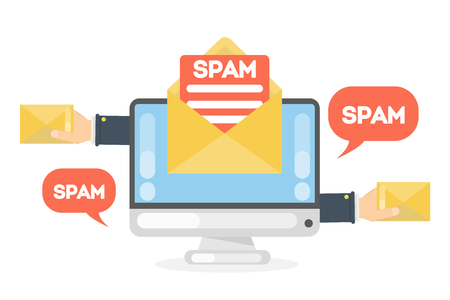Top 5 things to avoid with email ad serving

With so many new marketing methods available nowadays, there are some who believe that ad serving via email is somewhat old school. While that may certainly appear to be the case at first glance, the reality is that email advertising is as popular and effective as ever. It is certainly one of the most cost-effective ways to get a message out to the masses, but that is assuming that you are doing things the right way. There are some mistakes that are easy to make in
email ad serving, so we have picked out 5 common errors that you need to avoid at all costs.
Avoid complicated forms of advertising
We understand that you want to make your emails pop, but there are plenty of ways to do that without relying on flashier forms of advertising. Video, audio, JavaScript, Iframe ad tag all have a place in modern online advertising, but email is certainly not the best fit for those types of ads. The reason is because most email software blocks those formats. It’s best to keep things as simple as possible, which means sticking to images, banner ads, and text link ads.
Do not rely on IP addresses for geo-targeting
The IP address of the email viewer is not a reliable source for ad targeting because what your ad server sees is often the IP associated with the
image proxy or cache server controlled by the email service provider. Therefore, you are going to find that accuracy for geo targeting might be a challenge because of issues with detecting the right location that you are targeting.
Do not rely on frequency cap
It is common for online sites to set frequency caps on advertisements that will limit the number of impressions per ad per viewer. However, it is a challenge to achieve the same setup in email ads because of restrictions and limitations of email software. Cookie is often disabled and the same image proxy server might fetch ads on behalf of many viewers.
Limit the number of ads
People who have opted-in to receive your emails are already interested in what you have to offer. When you start seeing positive results with your email campaigns, it becomes all too easy to start thinking about sending them out more frequently. Bombarding them with too many ads in every email they receive will make the recipients feel as though they are being spammed and your subscriber list will start to shrink. If you don’t want to drive viewers away in droves, go easy on the number of ads in each newsletter and also consider a suitable interval between campaigns.
Limit the size of the ads
Back in the day, you could send out an email containing a large ad and know that people were going to open it on their PC and see that ad in all its glory. More and more people go online and access the internet via smartphones, tablets, and other smaller devices nowadays. It means that those bigger ads are going to fill the screen and be a nuisance or words are simply too small to be legible. With that problem in mind, make sure you use an
adserver that is responsive to the displaying screen size and design the ad with a suitable dimension, font size and file size.
Related
- Five limitations with serving ads in email
"With the rise of the internet, it has become easier than ever to quickly and affordably reach a lot of people for the purposes of marketing. Email marketing was one of the very early methods of getting your message out to the masses. " More
- Ad serving tips for email marketing
"There are countless different ways to get the word out and make money via advertising. While some advertisers focus on website ads, there are plenty more who understand the power of email. " More
- What you need to know about email ad serving?
"Email is still a very viable way of reaching your target audience, but it’s a method of marketing that has to be approached very carefully. Where things can get tricky is if you are juggling ads from different advertisers, you might end up blasting our emails containing ads that are only relevant to very few people on your mailing list. " More
 With so many new marketing methods available nowadays, there are some who believe that ad serving via email is somewhat old school. While that may certainly appear to be the case at first glance, the reality is that email advertising is as popular and effective as ever. It is certainly one of the most cost-effective ways to get a message out to the masses, but that is assuming that you are doing things the right way. There are some mistakes that are easy to make in email ad serving, so we have picked out 5 common errors that you need to avoid at all costs.
With so many new marketing methods available nowadays, there are some who believe that ad serving via email is somewhat old school. While that may certainly appear to be the case at first glance, the reality is that email advertising is as popular and effective as ever. It is certainly one of the most cost-effective ways to get a message out to the masses, but that is assuming that you are doing things the right way. There are some mistakes that are easy to make in email ad serving, so we have picked out 5 common errors that you need to avoid at all costs.